Alumni
Find out what is happening with our SMU Environmental Science Alumni!
- Julia Purcell, Cumulative Effects Project Coordinator, Atlantic Policy Congress of First Nations Chiefs Secretariat (APC)
- Jordan H. Davis, Biological Technologist, Strum Consulting, Bedford, Nova Scotia
- Emma MacNeil, Air Quality Scientist for Stantec, Dartmouth, Halifax, Nova Scotia
- Jocelyn Kickbush, Wetland Restoration Ecologist, CB Wetlands & Environmental Specialists
- Cara Harvey, Technical Advisor, New Homes Department, Sustainable Housing Inc, Halifax, Nova Scotia.
- Brendan Blotnicky, Energy Efficient Product Installer, Summerhill, Halifax, Nova Scotia
- Emma Poirier, Graduate Studies in the field of Coastal Geomorphology
- Chelsea Adams, Environmental Scientist, IAQ & Occupational Hygienist with Pinchin LeBlanc Environmental Ltd.
- Dollie Campbell, Aquatic Science Technician, Department of Fisheries and Oceans
- Dr. Nicolas Warner, Seniorforsker (Senior Researcher), NILU (Norwegian Institute for Air Research)
- Evan Williams, Consulting Associate for the Maritime Tidal Energy Corporation
- Ryan Hamilton, Research, Organization & Communications Assistant (co-op)
Jordan H. Davis, SMU ENVS
Biological Technologist, Strum Consulting, Bedford, Nova Scotia
Website: https://strum.com/ I am currently employed as a full-time member of the Environmental Team at Strum Consulting after a brief stint as a summer intern. We essentially ensure that our clients do not harm ecologically significant areas within the project boundaries of various prospective windfarms. My efforts are divided between the two realms: field work and office work. During the summer and a little into the fall, my field work is comprised primarily of delineation for both wetlands and watercourses around Nova Scotia, to support Environmental Assessments (EAs) that we write. With at-risk flora and fauna of particular interest to our team, field work involves gathering notes and information of the key characteristics of the project area. Secondarily, data management and upkeep of in-the-field monitoring equipment such as trail cams, bat monitors, acoustic monitors, and avian radars are all a part of the process. The office component is working with the previously gathered field data, streaming it to the proper team members, parsing through the data, and making the data presentable for EA writing.
I am currently employed as a full-time member of the Environmental Team at Strum Consulting after a brief stint as a summer intern. We essentially ensure that our clients do not harm ecologically significant areas within the project boundaries of various prospective windfarms. My efforts are divided between the two realms: field work and office work. During the summer and a little into the fall, my field work is comprised primarily of delineation for both wetlands and watercourses around Nova Scotia, to support Environmental Assessments (EAs) that we write. With at-risk flora and fauna of particular interest to our team, field work involves gathering notes and information of the key characteristics of the project area. Secondarily, data management and upkeep of in-the-field monitoring equipment such as trail cams, bat monitors, acoustic monitors, and avian radars are all a part of the process. The office component is working with the previously gathered field data, streaming it to the proper team members, parsing through the data, and making the data presentable for EA writing.
As an international graduate, this kind of work is very much in-line with what I wanted to do career-wise with my degree. Working outdoors, getting to see the province, and being able to watch birds as more than a hobby are a great points for me.
Air Quality Scientist for Stantec, Dartmouth, Halifax
Website: www.stantec.com
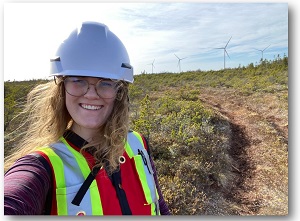 After graduating in 2019, I worked for two and a half years doing industrial stack testing with an environmental consulting firm based out of Saint Margaret's Bay. I had the opportunity to travel all over the Atlantic provinces (and Quebec), climbing smokestacks and measuring the emissions for a wide variety of parameters such as particulate matter, metals, semi volatile organic compounds, and halides.
After graduating in 2019, I worked for two and a half years doing industrial stack testing with an environmental consulting firm based out of Saint Margaret's Bay. I had the opportunity to travel all over the Atlantic provinces (and Quebec), climbing smokestacks and measuring the emissions for a wide variety of parameters such as particulate matter, metals, semi volatile organic compounds, and halides.
In my current role at Stantec I still do stack testing projects, but I also work on a wide variety of other projects. I lead the ambient air sampling program that is collecting baseline data for the Boat Harbour Remediation Project in Pictou Landing. I have also completed greenhouse gas verification training which allowed me to work on projects that calculate greenhouse gas emissions for large scale mining operations and oil and gas operations.
Working for a busy consulting company means there are always lots of opportunities to work on projects that are outside my normal scope of work. My degree prepared me for working in an interdisciplinary field in environmental science and has helped me work on bat habitat surveys, vegetation surveys, bird migration surveys, and remediation trials!
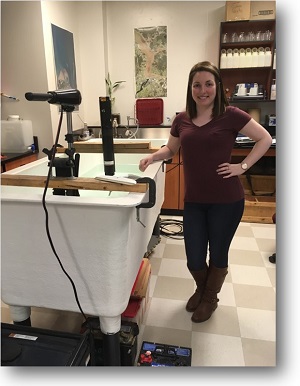 I graduated with a Bachelor of Science degree from Saint Mary’s University in 2017. I doubled majored in environmental science, for which I completed an honours thesis, and geography. I also have a Master of Science (Applied Science) degree from Saint Mary’s University that I obtained in 2021.
I graduated with a Bachelor of Science degree from Saint Mary’s University in 2017. I doubled majored in environmental science, for which I completed an honours thesis, and geography. I also have a Master of Science (Applied Science) degree from Saint Mary’s University that I obtained in 2021.
I currently work as the Cumulative Effects Project Coordinator for the Atlantic Policy Congress of First Nations Chiefs Secretariat (APC). I started in this position shortly after graduating in 2021 and have since continued my work with APC on cumulative effects issues that Atlantic First Nations communities are faced with every day, particularly environmental issues.
The skills and knowledge I obtained from studying environmental science and geography has contributed greatly to my success in the workplace. From report writing to working collaboratively with other students, these experiences have allowed me to perform with confidence and achieve great results. However, I believe what impacted me the most was the passion and interest I developed as a result of taking environmental science courses. The first environmental science course I took was Climate Change, and that course is what changed my academic pathway moving forward. If I hadn’t of taken that course, I don’t think I would be working where I am today, and I absolutely love my job.
Jocelyn Kickbush, SMU ENVS
Wetland Restoration Ecologist, CB Wetlands & Environmental Specialists
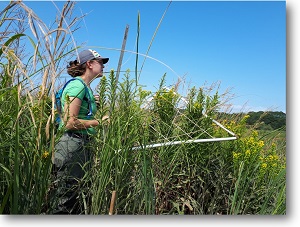 My Environmental Science studies at SMU sparked my interest in wetlands, nature-based solutions, and contaminants. I graduated from SMU in 2015 after completing my honours research (with Dr. Linda Campbell as supervisor) regarding methylmercury, arsenic, and selenium concentrations in fish species, and decided to pursue a Masters at Acadia University, supervised by Dr. Nelson O'Driscoll, researching influences on mercury methylation in coastal wetlands (from which I graduated in 2018). Both my undergraduate and graduate degrees made it clear to me how fascinating and crucial wetlands are to the underpinnings of our human health, our society, as well as the health of our environment. They are the filters which keep our waters clean, the critical bottleneck in life strategies that supports and nurtures all trophic levels (from algae to fish to birds), a key and vital source of offshore nutrients for marine life, one of the first and best lines of defence for our coasts and coastal communities from storms and flooding, the creators of Nova Scotia's most fertile agricultural soil, and location of some of the most desirable land to live and development (to name a few reasons why wetlands are critical). My studies at SMU (and Acadia) made me reassess the lens in which I view the world; a lens which unconsciously separated humans and nature (e.g. the difference between natural and unnatural). With every scientific article that I read, and every piece of scientific evidence shown to me, I began to shift from viewing humans as separate from nature but instead very much as part of it. Due to my studies, I began to fully appreciate how interconnected everything was. This was not just a feeling, it was measurable, it was peer-reviewed, and the impacts of human interaction with the environment have very clear repercussions that circle back and likewise impact us as a species. Because of these teachings that demonstrated the unsustainability of humans' current relationship with the environment, I decided I wanted to be part of the solution and pursued a career in ecological restoration.
My Environmental Science studies at SMU sparked my interest in wetlands, nature-based solutions, and contaminants. I graduated from SMU in 2015 after completing my honours research (with Dr. Linda Campbell as supervisor) regarding methylmercury, arsenic, and selenium concentrations in fish species, and decided to pursue a Masters at Acadia University, supervised by Dr. Nelson O'Driscoll, researching influences on mercury methylation in coastal wetlands (from which I graduated in 2018). Both my undergraduate and graduate degrees made it clear to me how fascinating and crucial wetlands are to the underpinnings of our human health, our society, as well as the health of our environment. They are the filters which keep our waters clean, the critical bottleneck in life strategies that supports and nurtures all trophic levels (from algae to fish to birds), a key and vital source of offshore nutrients for marine life, one of the first and best lines of defence for our coasts and coastal communities from storms and flooding, the creators of Nova Scotia's most fertile agricultural soil, and location of some of the most desirable land to live and development (to name a few reasons why wetlands are critical). My studies at SMU (and Acadia) made me reassess the lens in which I view the world; a lens which unconsciously separated humans and nature (e.g. the difference between natural and unnatural). With every scientific article that I read, and every piece of scientific evidence shown to me, I began to shift from viewing humans as separate from nature but instead very much as part of it. Due to my studies, I began to fully appreciate how interconnected everything was. This was not just a feeling, it was measurable, it was peer-reviewed, and the impacts of human interaction with the environment have very clear repercussions that circle back and likewise impact us as a species. Because of these teachings that demonstrated the unsustainability of humans' current relationship with the environment, I decided I wanted to be part of the solution and pursued a career in ecological restoration.
I am now a Wetland Restoration Ecologist with CB Wetlands & Environmental Specialists (a connection I made at SMU because the CEO, Tony Bowron, was my professor for a first year ENVS course) where I am part of a team of passionate people, and work on projects that focus on finding nature-based solutions to the climate crisis. These projects range from restoring and monitoring salt marshes (including Canada's largest fish habitat bank), creating coastal wetland systems for endangered species (such as Piping Plovers), monitoring fish species in estuaries, creating Canada's first halophytic plant nursery (an offshoot of CBWES) and the tool provincially used by practitioners for tidal wetland restoration and dyke realignment, training and educating community members and other organizations on tidal wetland restoration, providing DFO with industry expertise input for changing policies and regulations, to designing and implementing living shorelines for local communities.
Technical Advisor, New Homes Department, Sustainable Housing Inc, Halifax, Nova Scotia.
Website: http://www.sustainablehousing.ca/
I'm a Technical Advisor there in the New Homes department. In short, home builders in Nova Scotia and New Brunswick can enroll through our company into an energy efficiency rebate program for new construction put on by Efficiency Nova Scotia. They submit their architectural plans or blueprints to myself or a colleague, and we model the home in 3D software, and then provide recommendations on home to make the home more sustainable, and how to incorporate that into the building process. Examples might be choosing different wall assemblies, lowering air change rates, or installing heat pumps in certain parts of the home etc., depending on the budget the home is working with. After the building of one of our on-site, evaluators will visit the home and report back to myself or a colleague which recommendations were taken, and we then make adjustments to their modelling, calculate annual energy consumption and GHG emissions among other things, and provide them with a score, which is then sent to ENS to trigger the rebate process. I've been able to get experience with other green building programs such as Energy Star, R-2000, and Passive Houses.
It's been a great job so far, and I've been very fortunate to find something within the general environmental field, almost right out of graduation. I never saw myself working in home constructions, but I've learned so much about building science and green building since starting here, information that will be useful for me wherever I go, even when I buy my own house some day! This is a family operated company, and the management are very kind, and great to work for. I love that every home is different, and each one brings unique challenges, and makes me work to establish a path to reach the target rating, so the HO can get the rebate they are looking for.
Back to the top.
Energy Efficient Product Installer, Summerhill, Halifax, Nova Scotia.
Website: http://summerhillgroup.ca/
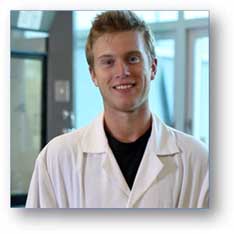 I am currently working full-time for a company called Summerhill (sister company to Clean Nova Scotia). We do a lot of work for Efficiency Nova Scotia. During my eight months I have worked as;
I am currently working full-time for a company called Summerhill (sister company to Clean Nova Scotia). We do a lot of work for Efficiency Nova Scotia. During my eight months I have worked as;
- An Energy Efficient Product Installer (ie. lights, water saving measures, heat measures)
- I am a Team Lead in this same role now (getting a promotion within five months of hire)
- I have done business energy assessments and product retrofits
- On the weekends I work as an Efficiency Ambassador in retail stores (discussing Efficiency NS programs/teaching consumers the benefits toward energy efficient products/easy everyday energy saving measures)
- Data entry for numerous programs (Nalcor-NFLD) for people in remote areas of Northern Newfoundland.
I will be finishing my 2nd term with them in August where I will then be resuming my education at Dalhousie (always a husky at heart though!) to pursue my Masters of Resource and Environmental Management. This program, for the sounds of it, is perfect for my career desires as its a combination of business with an environmental/resource focus.
Back to the top.
Graduate Student in the field of Costal Geomorphology
 I am working with Dr. Danika van Proosdij of the Geography Department, in the field of Coastal Geomorphology. I'm studying sediment transport in intertidal systems, specifically the tidal creek and salt marsh systems in the Bay of Fundy. I'm examining the seasonal controls and spatial variability in sediment deposition and sediment erosion. This research is part of a collaborative effort (with Dalhousie, Queen's, and Fisheries and Oceans) to characterize the natural variability of these Bay of Fundy intertidal zones.
I am working with Dr. Danika van Proosdij of the Geography Department, in the field of Coastal Geomorphology. I'm studying sediment transport in intertidal systems, specifically the tidal creek and salt marsh systems in the Bay of Fundy. I'm examining the seasonal controls and spatial variability in sediment deposition and sediment erosion. This research is part of a collaborative effort (with Dalhousie, Queen's, and Fisheries and Oceans) to characterize the natural variability of these Bay of Fundy intertidal zones.
Back to the top.
Environmental Scientist, IAQ & Occupational Hygenist with Pinchin LeBlanc Environmental Ltd.
Website: http://www.pinchinleblanc.com/
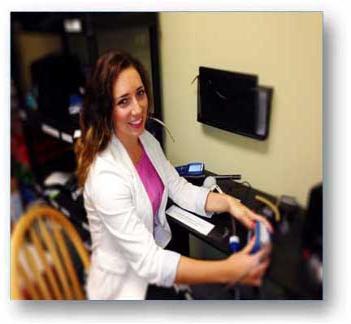 I am currently working for Pinchin LeBlanc Environmental Ltd which is a full-service environmental consulting firm which was established in 1993. We offer a fill range of environmental services however I work in the Indoor Air Quality (IAQ) and Occupational Hygiene Group.
I am currently working for Pinchin LeBlanc Environmental Ltd which is a full-service environmental consulting firm which was established in 1993. We offer a fill range of environmental services however I work in the Indoor Air Quality (IAQ) and Occupational Hygiene Group.
Air quality is a prominent issue in large measure because energy-efficient buildings have created airtight environments with less air exchange. As part of my responsibilities I measure IAQ comfort parameters including temperature, relative humidity, air pressure, air velocity, and carbon monoxide. I also examine buildings for contaminant sources in both the indoor and outdoor environment, with testing for specific contaminants. Furthermore, I conduct microbiological testing to determine levels of specific types of fungus. Responsibilities also include sampling of potable water sources for various marine and commercial clients.
In the field of occupational hygiene we concern ourselves with the anticipation, recognition, evaluation and control of occupational stressors that could lead to workplace diseases. These evaluations could involve developing sampling programs for a range of physical (i.e. noise/radiation), chemical (i.e. Ethyl Acetate, benzene, etc), and biological (i.e. mould) hazards.
Back to the top.
Aquatic Science Technician, Department of Fisheries and Oceans. Fisheries Biologist, Makivik Corporation.
Website: http://www.makivik.org/
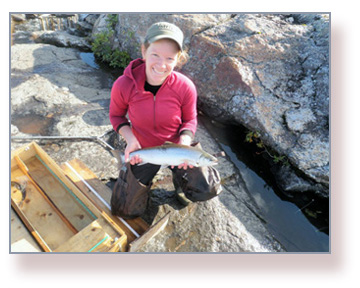 I graduated in 2006 and worked with DFO on and off with contract work as an Aquatic Science Technician and fishing elvers commercially for a couple of years before starting an MSc in Applied Science at SMU with dr. David Cone in Biology. MSc started in 2009 and worked on that until 2011 when I took a full-time permanent position as a Fisheries Biologist with a non-profit Inuit organization in Nunavik (Northern Quebec) known as Makivik Corporation. Worked with the Inuit of Nunavik until 2013 when I returned back to NS. It was wonderful working up there, beautiful fresh barren land of lovely culture. When I returned to NS I was able to pick up another contract with DFO as a Port Sampling Technician, monitoring commercial groundfish catches in cape Breton. once that was completed I finished up my MSc (2014) and am now back to fishing elvers commercially for the next couple weeks.
I graduated in 2006 and worked with DFO on and off with contract work as an Aquatic Science Technician and fishing elvers commercially for a couple of years before starting an MSc in Applied Science at SMU with dr. David Cone in Biology. MSc started in 2009 and worked on that until 2011 when I took a full-time permanent position as a Fisheries Biologist with a non-profit Inuit organization in Nunavik (Northern Quebec) known as Makivik Corporation. Worked with the Inuit of Nunavik until 2013 when I returned back to NS. It was wonderful working up there, beautiful fresh barren land of lovely culture. When I returned to NS I was able to pick up another contract with DFO as a Port Sampling Technician, monitoring commercial groundfish catches in cape Breton. once that was completed I finished up my MSc (2014) and am now back to fishing elvers commercially for the next couple weeks.
It has been a busy few years after graduating but I have had so many opportunities.
Seniorforsker (Senior Researcher), NILU (Norwegian Institute for Air Research). Kjeller, Norway.
Website: http://www.nilu.no/
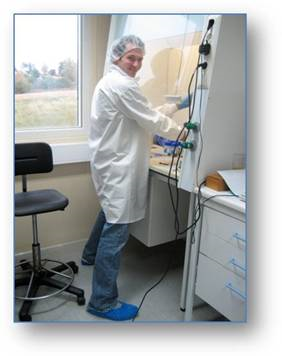 After graduating from SMU, I moved to Edmonton, Alberta to pursue my PhD in Analytical Chemistry. There I studied the enantioselective metabolism of chiral pollutants in marine organisms and humans. After completing my PhD in 2008, I moved to Tromsø, Norway for a post-doctoral research position to work under the COPOL (Contaminants in Polar Regions) project which aimed at investigating how transport and exposure of environmental pollutants will be affected by changes in the physical environment cause by climate change. I stayed on at NILU and am now a senior researcher where my area of interest lies in Development of analytical methodology to better determine environmental exposure and fate of emerging environmental pollutants, with particular focus on chemicals used in personal care products.
After graduating from SMU, I moved to Edmonton, Alberta to pursue my PhD in Analytical Chemistry. There I studied the enantioselective metabolism of chiral pollutants in marine organisms and humans. After completing my PhD in 2008, I moved to Tromsø, Norway for a post-doctoral research position to work under the COPOL (Contaminants in Polar Regions) project which aimed at investigating how transport and exposure of environmental pollutants will be affected by changes in the physical environment cause by climate change. I stayed on at NILU and am now a senior researcher where my area of interest lies in Development of analytical methodology to better determine environmental exposure and fate of emerging environmental pollutants, with particular focus on chemicals used in personal care products.
Back to the top.
Sailing instructor for Nova Scotia Sea School, Consulting Associate for the Maritime Tidal Energy Corporation, Halifax, Nova Scotia.
Website: http://maritimetidal.com/
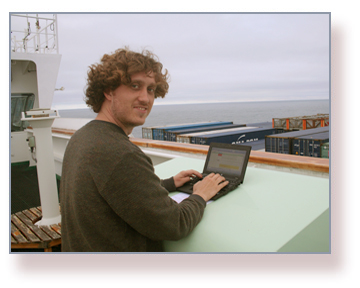 I am currently aboard the CMA-CGM La Scala passing Kamchatka and bound for Vancouver. I recently finished an internship in Shanghai with CESG-Shanghai, a Sustainable Transport start-up company focused on providing consulting services and gathering urban transport data on Chinese cities. The trip across the Pacific takes 12 days, during which time I am working on a policy matrix for CESG-Shanghai. I will be returning to Nova Scotia this summer to work for the Nova Scotia Sea School as a sailing instructor and in the fall I plan on continuing work as a consulting associate for the Maritime Tidal Energy Corporation and attending the International Conference on Ocean Energy taking place in Halifax the first week of November 2014.
I am currently aboard the CMA-CGM La Scala passing Kamchatka and bound for Vancouver. I recently finished an internship in Shanghai with CESG-Shanghai, a Sustainable Transport start-up company focused on providing consulting services and gathering urban transport data on Chinese cities. The trip across the Pacific takes 12 days, during which time I am working on a policy matrix for CESG-Shanghai. I will be returning to Nova Scotia this summer to work for the Nova Scotia Sea School as a sailing instructor and in the fall I plan on continuing work as a consulting associate for the Maritime Tidal Energy Corporation and attending the International Conference on Ocean Energy taking place in Halifax the first week of November 2014.
Research, Organization & Co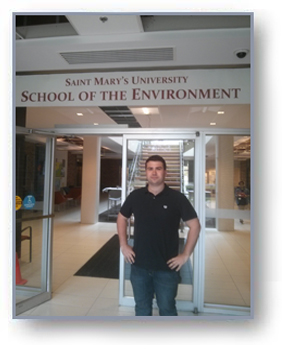 mmunications Assistant (co-op) for the Saint Mary's School of the Environment.
mmunications Assistant (co-op) for the Saint Mary's School of the Environment.
I am assisting with the establishment of the new School of the Environment as a major player at the University, as well as in Halifax, in Nova Scotia, and in Canada as a whole.
I am working with faculty and students within the SOE to develop tools to support and promote their environmental research and community service. Also, externally meeting with a wide range of organizations to highlight the educational opportunities the SOE offers to current and new students, and the importance of the environmental research taking place on campus.